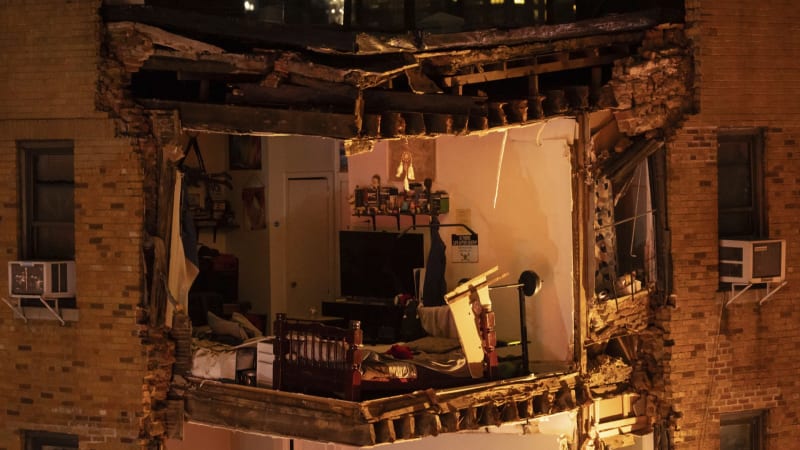Navigation
Install the app
How to install the app on iOS
Follow along with the video below to see how to install our site as a web app on your home screen.
Note: This feature may not be available in some browsers.
More options
Style variation
-
Congratulations cowski on being selected by the Eng-Tips community for having the most helpful posts in the forums last week. Way to Go!
You are using an out of date browser. It may not display this or other websites correctly.
You should upgrade or use an alternative browser.
You should upgrade or use an alternative browser.
Bronx Apartment building partial collapse 18
- Thread starter AusG
- Start date
- Status
- Not open for further replies.
-
3
- #3
stru_eng_guy
Structural
Large cracking at first level at corner of collapse. seen on google street view
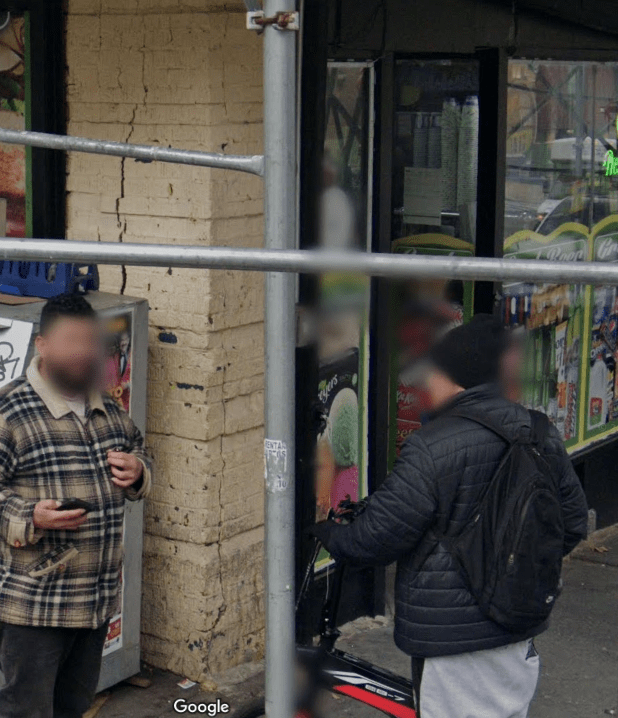

-
1
- #5
ABC7 Article said:Department of Buildings Commissioner James Oddo says that the owner of the building submitted their most recent report in March of 2021, which found seven open violations, including "unsafe facade conditions."
A 2020 inspection found cracked brick and loose, damaged mortar on the building's facade, Buildings Department records show. Oddo said Monday that work had started but he didn't believe any workers were there at the time of the collapse.
"I want to be clear: Unsafe facade conditions is not the same as an unsafe building," he said at the news conference. While the property had seven unresolved violations, they weren't structural, he said. Five of them were Office of Administrative Trials and Hearings (OATH) and Environmental Control Board (ECB) violations, while the other two were DOB violations.
Sounds like a fundamental misconception about what is non-structural facade versus loadbearing.
-
5
- #6
kissymoose
Structural
From google street view:
Aug 2011
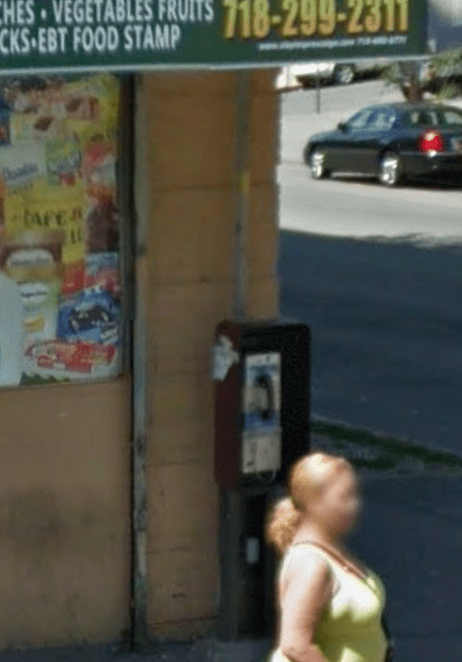
Jun 2014
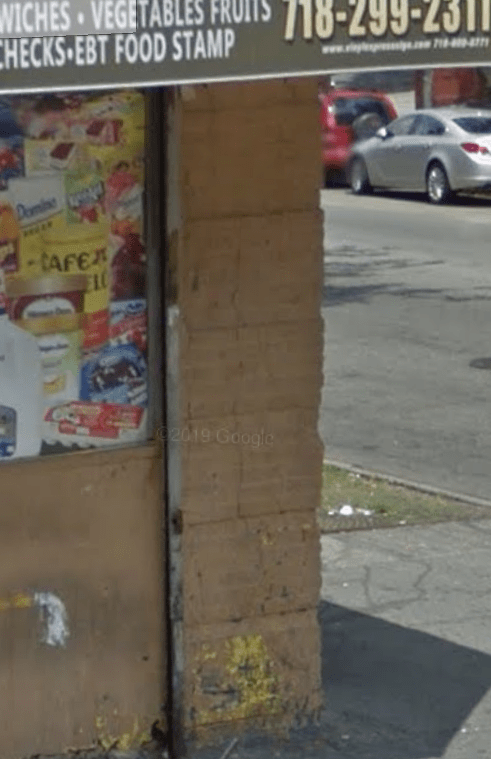
Sep 2017
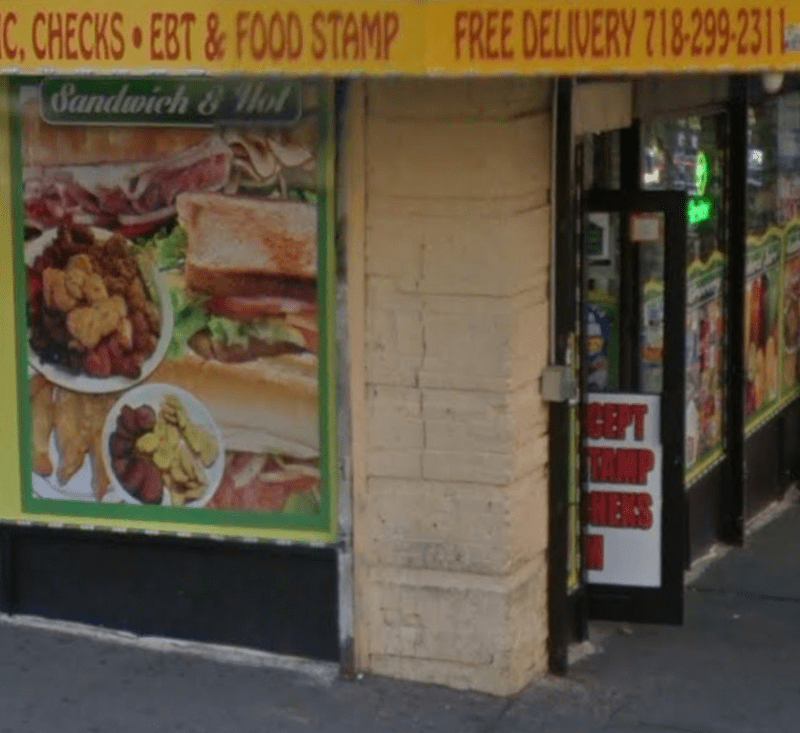
Aug 2019
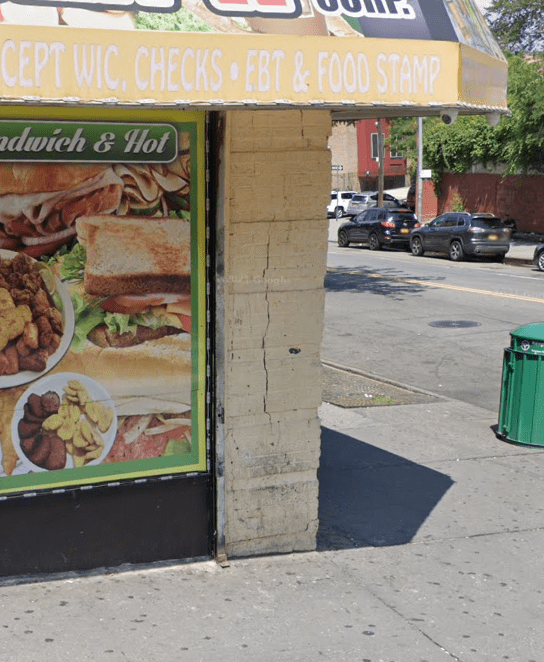
Aug 2021
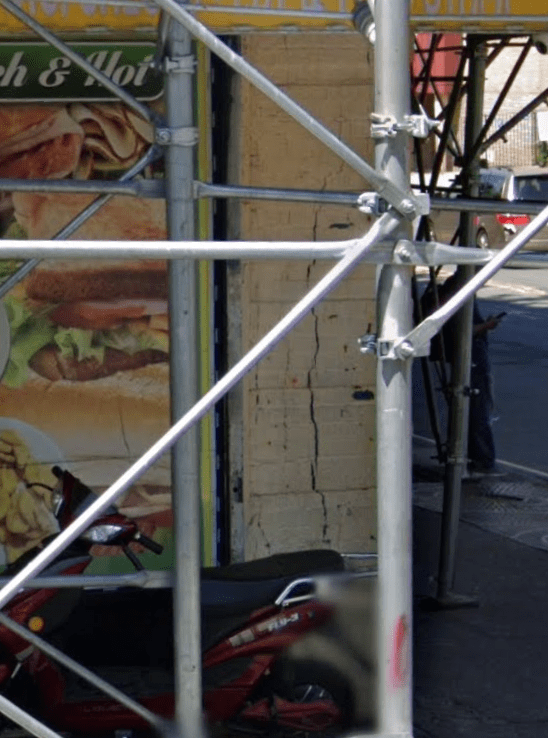
Aug 2011

Jun 2014

Sep 2017

Aug 2019

Aug 2021

-
6
- #7
-
1
- #8
From the Davenport lessons, exterior cracks in the outer wythe are clues to crushing of interior wythes. As the brickwork deteriorates, the interior wythes are left carrying the weight of the floor space while the exterior wythes no longer participte. The hidden damage behind interior finishes is far more grave than exterior presentations suggest.
I agree that the official declaration that facade issues are not structural issues completely misses the point. This lack of familiarity was a highlight of the Davenport collapse as well.
Perhaps we are at a new phase of these e.o.l. multiwane structures where we are learning new lessons that are not historically part of the knowledge base.
I agree that the official declaration that facade issues are not structural issues completely misses the point. This lack of familiarity was a highlight of the Davenport collapse as well.
Perhaps we are at a new phase of these e.o.l. multiwane structures where we are learning new lessons that are not historically part of the knowledge base.
Sym P. le said:learning new lessons that are not historically part of the knowledge base.
I suppose you could say it's not part of the wider knowledge base. These structures are typically handled by engineers that specialize in historic structures. A lot of structural engineers actively avoid these structures. They don't fit nicely into a code check, so many don't want to bother with them. At least in my area, many of those specializing in historic structures are now retiring. It's good for me as I made it a point to pursue them from the time I graduated and got my first job. But it also means that a lot of offices no longer have 'that guy' and others are trying to figure it out.
It's also important not to over simplify things. While it may be that there are issues here that mirror Davenport, 2 data points in a sea of thousands of multi-wythe brick buildings does not a law make. I've seen a lot more than 2 brick buildings with cracking in the exterior where that, when the outer bricks were removed to repair it, the inner brick was in decent shape.
This does show the importance of crack monitoring, though. When a crack appears on a building and its cause isn't immediately evident, monitoring it should be one of the first things that gets done. Would have likely forced an intervention in this building by 2019.
phamENG said:It's also important not to over simplify things. While it may be that there are issues here that mirror Davenport, 2 data points in a sea of thousands of multi-wythe brick buildings does not a law make. I've seen a lot more than 2 brick buildings with cracking in the exterior where that, when the outer bricks were removed to repair it, the inner brick was in decent shape.
Fair point. I let hindsight bias creep in.
At that corner (where the store was), there are noticeably fewer walls compared to other corners, possibly due to commercial modifications aimed at expanding street frontage. The corner pier appeared to be carrying a lot of facade. Compare it to other building corners:
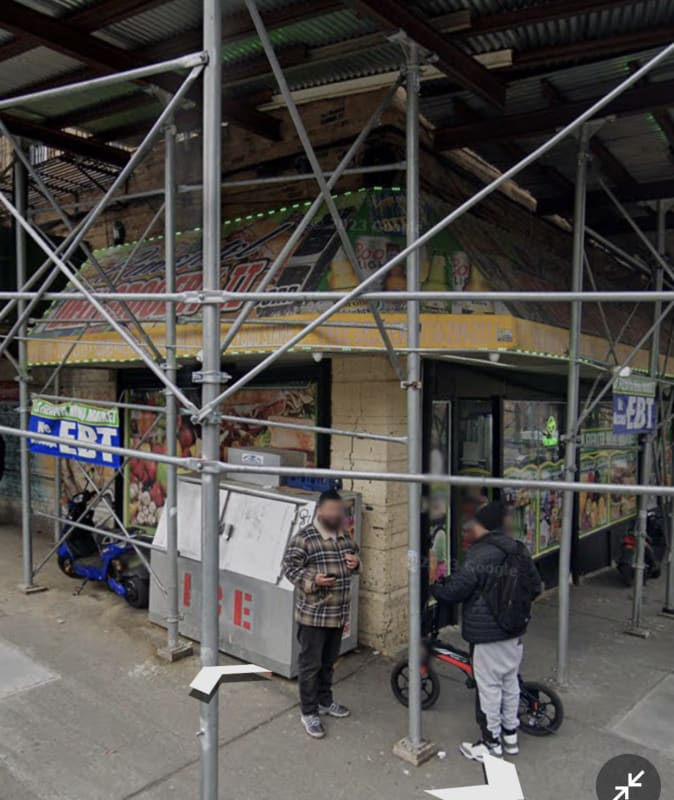
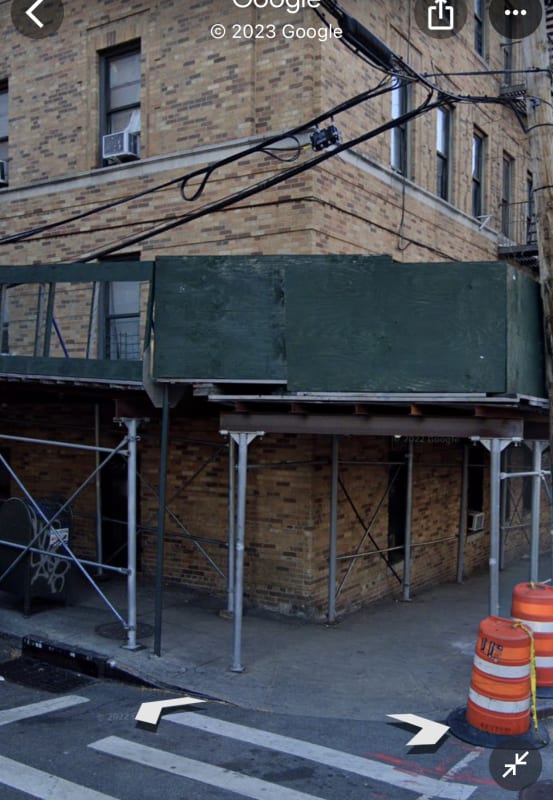
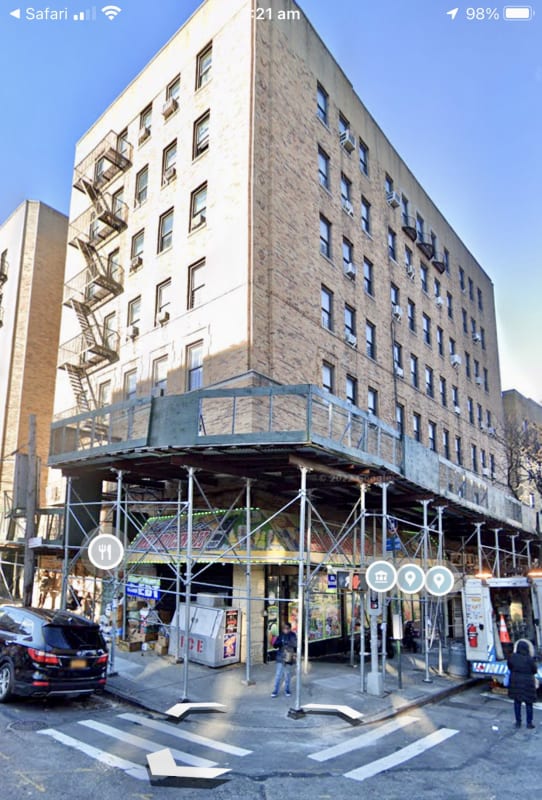
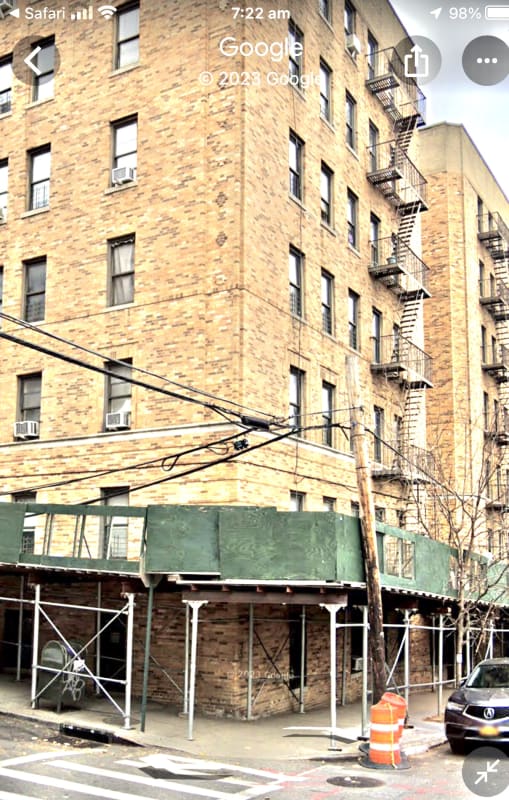




Depends If the corner post is just brick, it has a very different capacity than if the corner post has a steel post in it. Available images can't answer this question.
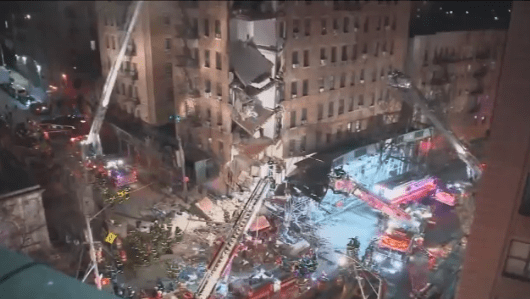
I concur with the opinion this is a building where the entire thickness of the outer walls were intended to be structural. 100+ years ago this was how things were done. At that time steel building frames were relatively new.

I concur with the opinion this is a building where the entire thickness of the outer walls were intended to be structural. 100+ years ago this was how things were done. At that time steel building frames were relatively new.
[URL unfurl="true" said:https://en.wikipedia.org/wiki/Steel_frame[/URL]]The Home Insurance Building, completed in 1885, was the first to use skeleton frame construction, completely removing the load bearing function of its masonry cladding. In this case the iron columns are merely embedded in the walls, and their load carrying capacity appears to be secondary to the capacity of the masonry, particularly for wind loads. In the United States, the first steel framed building was the Rand McNally Building in Chicago, erected in 1890.
As much as the obvious east facing crack appeared 12 or more years ago, the north facing crack fully developed in the last 3-4 years, at least from what I can discern from the Street view library. If Tomfhs calculations were for an intact column, how much worse was the loading as the column disassembled. One witness stated the collapse progressed from the top floors down, which is contrary to the column exploding.
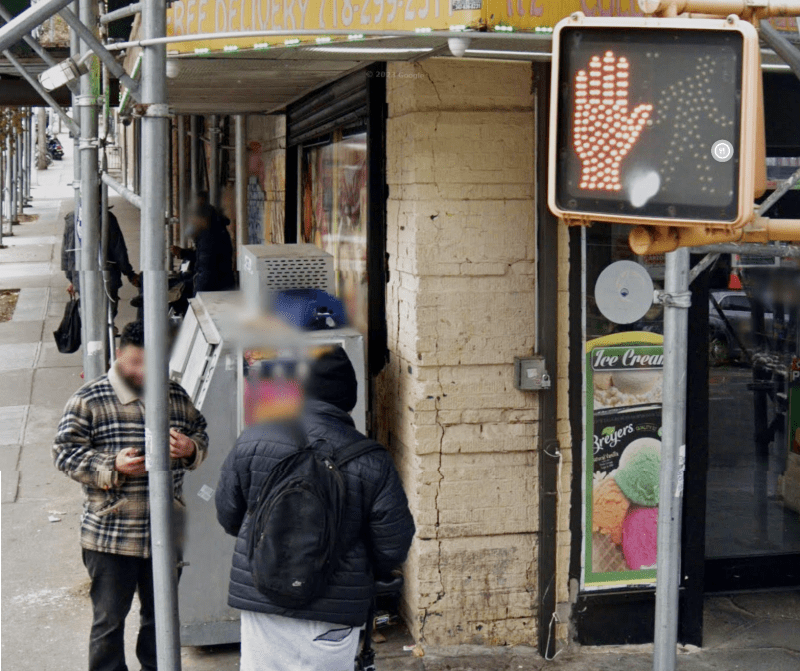
Another detail of import is the decorative setback in the northeast corner of the upper floors. Did this aggravate an eccentric load for the corner column. It would seem the floors were tied into the structural brick only on the north face. How did that impact the column loading.
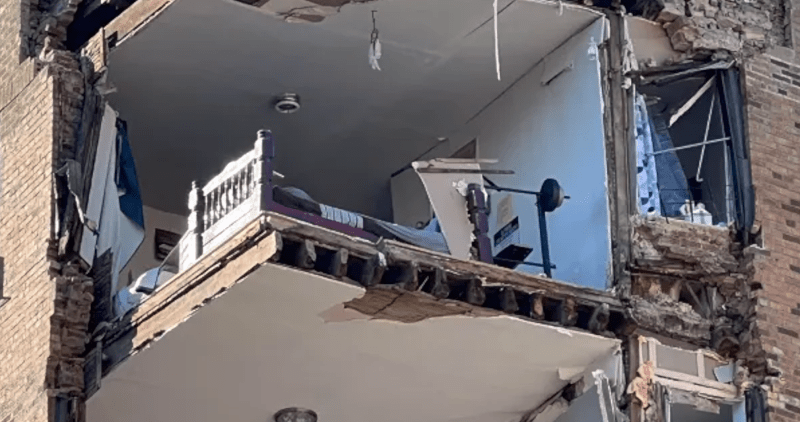
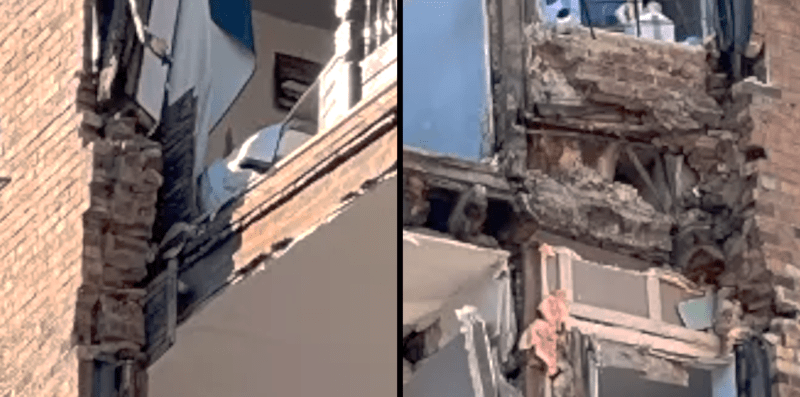
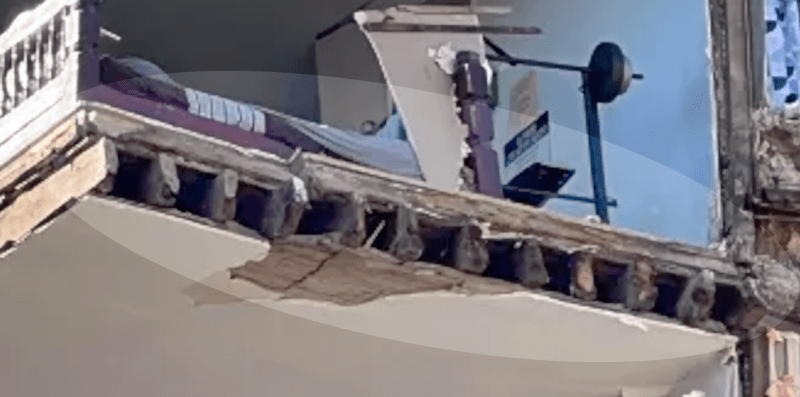
P.S. I hadn't considered the possibility of a steel post. Davenport only had perimeter steel on the expensive part of the building.
Also, in this situation, only the brickwork came down. The remainder of the structure is still largely in tact.

Another detail of import is the decorative setback in the northeast corner of the upper floors. Did this aggravate an eccentric load for the corner column. It would seem the floors were tied into the structural brick only on the north face. How did that impact the column loading.



P.S. I hadn't considered the possibility of a steel post. Davenport only had perimeter steel on the expensive part of the building.
Also, in this situation, only the brickwork came down. The remainder of the structure is still largely in tact.
jerseyshore
Structural
Eyewitness accounts are extremely unreliable, but it will be interesting to see any security footage.
This is why I turn town all NYC or NJ facade inspection jobs since they instituted the 5 yr rules. There are just a billion cracks like this in older brick buildings in this area and you get desensitized to them. They're all in rough shape, but a failure in NYC is like once a year so it's hard to say 'Evacuate immediately'. Think we had similar conversations about that masonry building collapse over the summer.
This is why I turn town all NYC or NJ facade inspection jobs since they instituted the 5 yr rules. There are just a billion cracks like this in older brick buildings in this area and you get desensitized to them. They're all in rough shape, but a failure in NYC is like once a year so it's hard to say 'Evacuate immediately'. Think we had similar conversations about that masonry building collapse over the summer.
Potential water main issues or other leak. This is a new angle. Stay tuned.
The street work was marked as early as August 2021. I'm not sure how they would link a leak in the bodega to the street work.
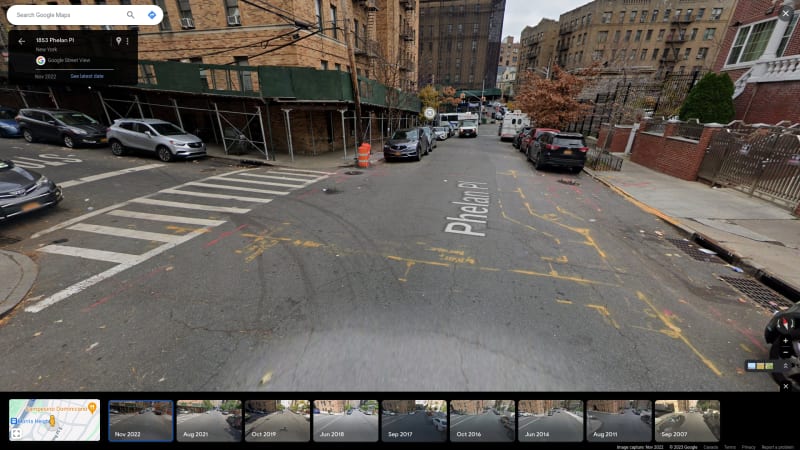
Google Street View
The fire department does not appear to be concerned about the street being undermined.
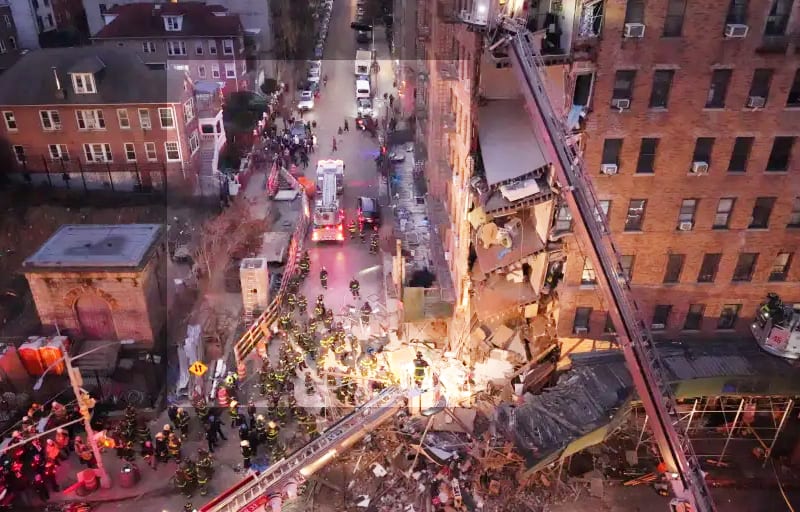
[URL unfurl="true" said:https://wrightsnews.biz.id/as-the-search-begins-to-determine-the-cause-of-the-bronx-buildings-collapse-an-engineer-says-work-on-the-water-main-could-be-a-factor/[/URL]]Richard Koenigsberg, an engineer hired by the building’s owner to bring the dilapidated façade up to code, inspected the site on Monday and suspected that work on the water main could play a role, as he had assumed the collapse apparently took place on the first floor level.
“It looks like the problem is on the first floor. I say that because of the way it collapsed,” he told THE CITY on Monday. “It looks like the corner column on the first floor broke and then the rest fell down.”
The New York Times quoted an employee at an accountant’s office on the building’s ground floor as saying the collapse occurred shortly after a large water leak broke out in a first-floor market next door.
When asked if work on the water main could have been a factor in the collapse, Department of Buildings spokesman Andrew Rudansky said, “The DOB’s investigation into the cause of this collapse is ongoing.”
Michaels said the water main work – which was suspended Monday as the city works to investigate and ultimately clear the site – took place at the corner of Phelan Place and Billingsley Terrace. The collapse occurred at the corner of Phelan and West Burnside Avenue, just a few feet away.
The street work was marked as early as August 2021. I'm not sure how they would link a leak in the bodega to the street work.

Google Street View
The fire department does not appear to be concerned about the street being undermined.

- Status
- Not open for further replies.
Similar threads
- Replies
- 2
- Views
- 823
- Replies
- 13
- Views
- 13K
- Replies
- 17
- Views
- 1K
- Replies
- 6
- Views
- 789
- Replies
- 8
- Views
- 6K

